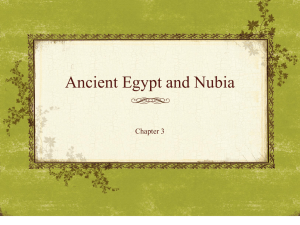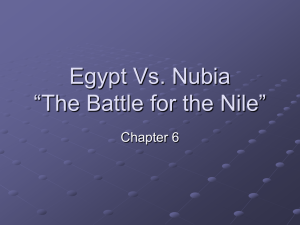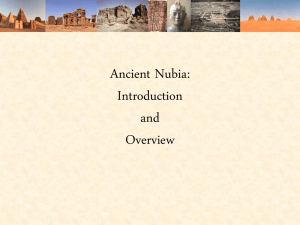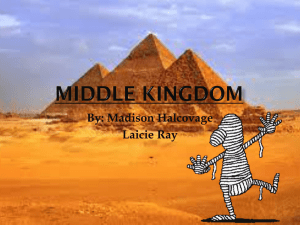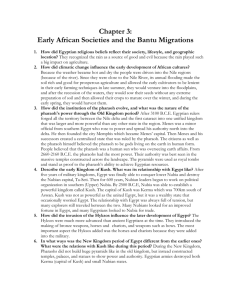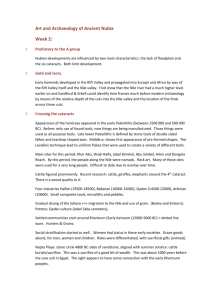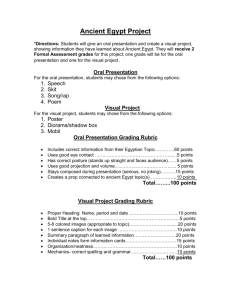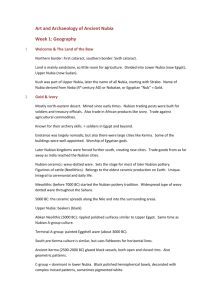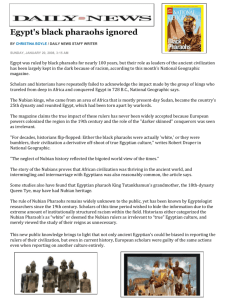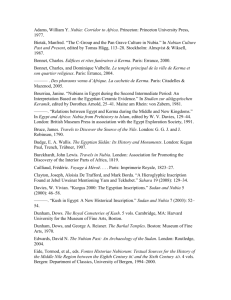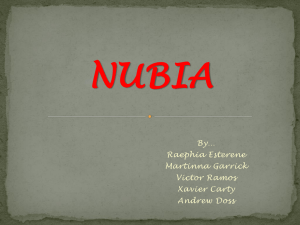Historical Investigation — Nubia: A Rival of Egypt
advertisement
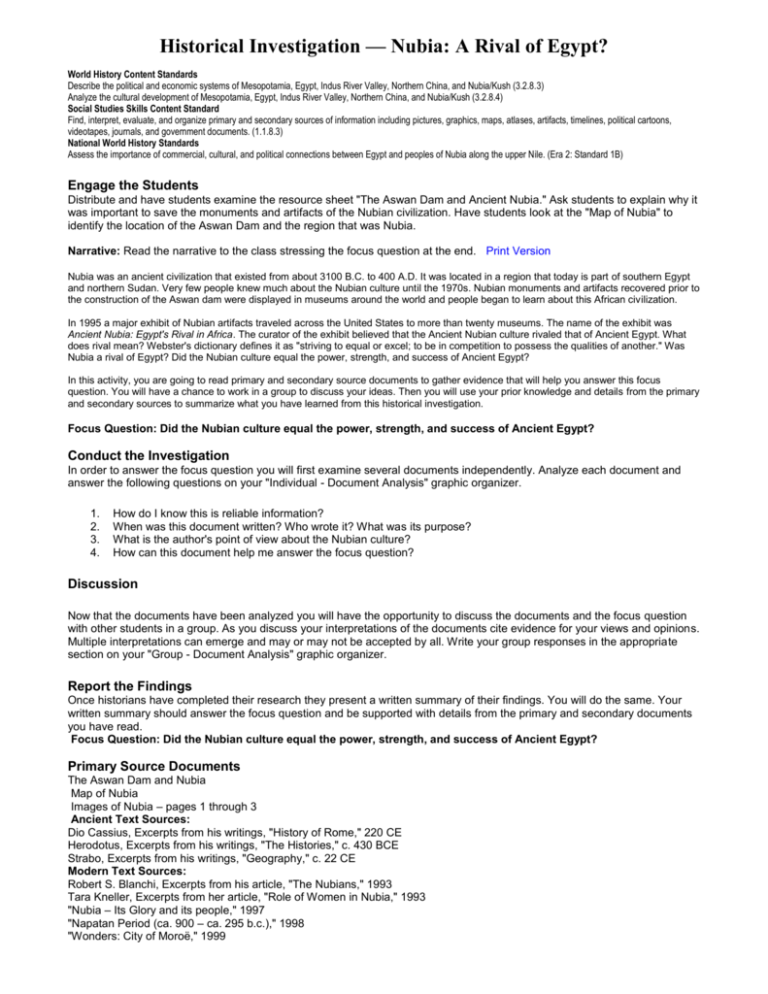
Historical Investigation — Nubia: A Rival of Egypt? World History Content Standards Describe the political and economic systems of Mesopotamia, Egypt, Indus River Valley, Northern China, and Nubia/Kush (3.2.8.3) Analyze the cultural development of Mesopotamia, Egypt, Indus River Valley, Northern China, and Nubia/Kush (3.2.8.4) Social Studies Skills Content Standard Find, interpret, evaluate, and organize primary and secondary sources of information including pictures, graphics, maps, atlases, artifacts, timelines, political cartoons, videotapes, journals, and government documents. (1.1.8.3) National World History Standards Assess the importance of commercial, cultural, and political connections between Egypt and peoples of Nubia along the upper Nile. (Era 2: Standard 1B) Engage the Students Distribute and have students examine the resource sheet "The Aswan Dam and Ancient Nubia." Ask students to explain why it was important to save the monuments and artifacts of the Nubian civilization. Have students look at the "Map of Nubia" to identify the location of the Aswan Dam and the region that was Nubia. Narrative: Read the narrative to the class stressing the focus question at the end. Print Version Nubia was an ancient civilization that existed from about 3100 B.C. to 400 A.D. It was located in a region that today is part of southern Egypt and northern Sudan. Very few people knew much about the Nubian culture until the 1970s. Nubian monuments and artifacts recovered prior to the construction of the Aswan dam were displayed in museums around the world and people began to learn about this African civilization. In 1995 a major exhibit of Nubian artifacts traveled across the United States to more than twenty museums. The name of the exhibit was Ancient Nubia: Egypt's Rival in Africa. The curator of the exhibit believed that the Ancient Nubian culture rivaled that of Ancient Egypt. What does rival mean? Webster's dictionary defines it as "striving to equal or excel; to be in competition to possess the qualities of another." Was Nubia a rival of Egypt? Did the Nubian culture equal the power, strength, and success of Ancient Egypt? In this activity, you are going to read primary and secondary source documents to gather evidence that will help you answer this focus question. You will have a chance to work in a group to discuss your ideas. Then you will use your prior knowledge and details from the primary and secondary sources to summarize what you have learned from this historical investigation. Focus Question: Did the Nubian culture equal the power, strength, and success of Ancient Egypt? Conduct the Investigation In order to answer the focus question you will first examine several documents independently. Analyze each document and answer the following questions on your "Individual - Document Analysis" graphic organizer. 1. 2. 3. 4. How do I know this is reliable information? When was this document written? Who wrote it? What was its purpose? What is the author's point of view about the Nubian culture? How can this document help me answer the focus question? Discussion Now that the documents have been analyzed you will have the opportunity to discuss the documents and the focus question with other students in a group. As you discuss your interpretations of the documents cite evidence for your views and opinions. Multiple interpretations can emerge and may or may not be accepted by all. Write your group responses in the appropriate section on your "Group - Document Analysis" graphic organizer. Report the Findings Once historians have completed their research they present a written summary of their findings. You will do the same. Your written summary should answer the focus question and be supported with details from the primary and secondary documents you have read. Focus Question: Did the Nubian culture equal the power, strength, and success of Ancient Egypt? Primary Source Documents The Aswan Dam and Nubia Map of Nubia Images of Nubia – pages 1 through 3 Ancient Text Sources: Dio Cassius, Excerpts from his writings, "History of Rome," 220 CE Herodotus, Excerpts from his writings, "The Histories," c. 430 BCE Strabo, Excerpts from his writings, "Geography," c. 22 CE Modern Text Sources: Robert S. Blanchi, Excerpts from his article, "The Nubians," 1993 Tara Kneller, Excerpts from her article, "Role of Women in Nubia," 1993 "Nubia – Its Glory and its people," 1997 "Napatan Period (ca. 900 – ca. 295 b.c.)," 1998 "Wonders: City of Moroë," 1999 Additional web sources include: http://www.umich.edu/~newsinfo/MT/95/Oct95/mt10o95.html http://www.shsu.edu/~his_ncp/Sudan.html http://www.oi.uchicago.edu/OI/PROJ/NUB/NUBX/NUBX_brochure.html http://www.freemaninstitute.com/Gallery/nubia.htm
